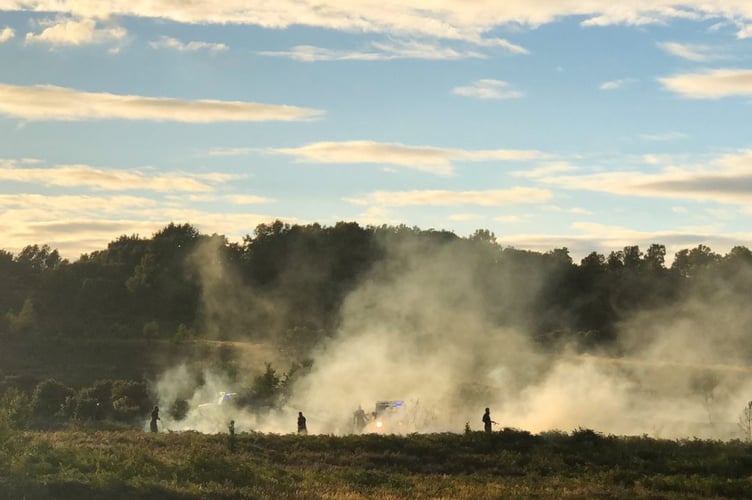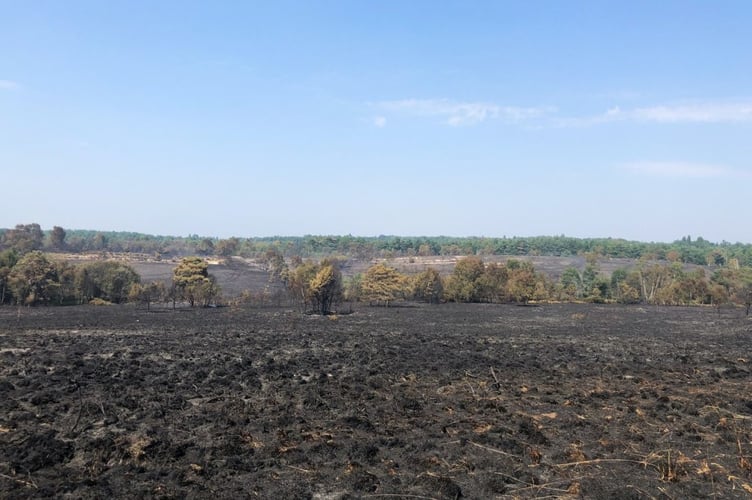WILDLIFE experts who manage Chobham Common are pleading with the public not to smoke, start campfires or light barbecues in the countryside.
Around 74 acres of the northern part of Chobham Common, a national nature reserve and part of a European Special Protection Area, have been destroyed by a fire. The blaze started last Friday afternoon on the neighbouring Sunningdale Golf Course and spread to three other locations.
The common is managed by Surrey Wildlife Trust (SWT), which warns there is a high and continuing risk of wildfire on Surrey’s heathlands.
The trust’s director of biodiversity, James Adler, said: “All Surrey heathland sites are highly vulnerable to heath fires at present.
“We are very concerned that climate change is leading to an increase in frequency of wildfires, which present a danger to human life, people’s homes as well as wildlife.

“Wildfires are unpredictable, dangerous and particularly damaging to precious habitat, which has taken years of management to get into optimum condition for reptiles, such as adders and sand lizards, as well as woodlark and Dartford warblers and thousands of invertebrate species.
“When these habitats are destroyed by wildfire, it may take many years before the area becomes suitable for them again. If a fire is too big it can wipe out whole populations of species and, due to fragmentation of habitats, it may not be possible for recolonisation to occur.”
He said SWT hoped to work closely with the Government and other landowners to develop a climate-focused adaptation programme, where the risk of wildfire is reduced through landscape management.

Chobham Common, the largest national nature reserve in the South East of England, is a fragment of previously extensive lowland heath which is rarer than tropical rainforest. It is home to specialist reptiles, protected ground-nesting birds and thousands of species of insects which are in decline elsewhere.
There are 29 species of butterfly, including the rare silver-studded blue, and 22 types of dragonfly on the common. One hundred different bird species have been recorded there, including nightjars which migrate 4,000 miles from sub-Saharan Africa to breed.
The common has 300 species of wildflowers, including three types of heather, several species of native orchids, insect-eating sundews and rare marsh gentians. It is also one of the best British sites for insects, spiders, ladybirds, bees and wasps and has 25 species of mammal.
For more on this story, see the 13 August edition of the News & Mail, in shops tomorrow




